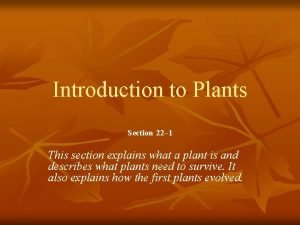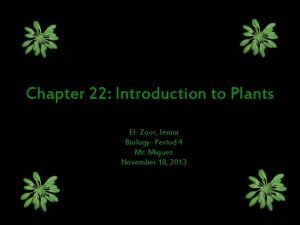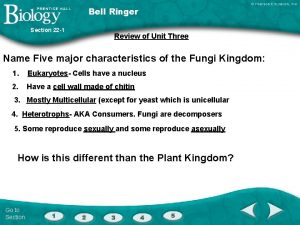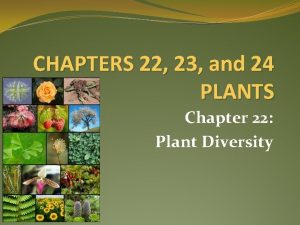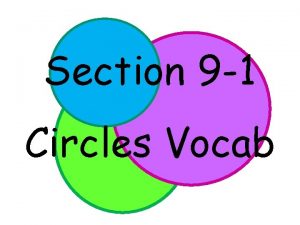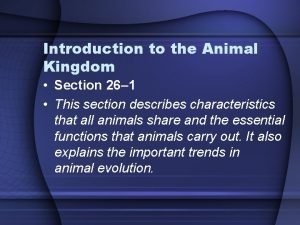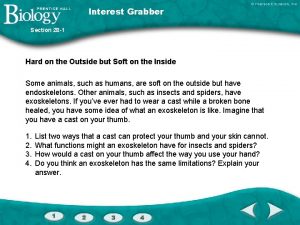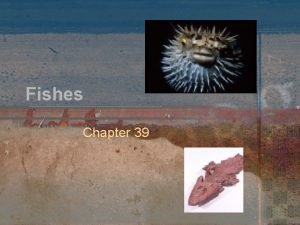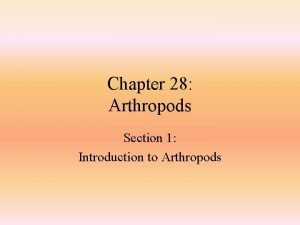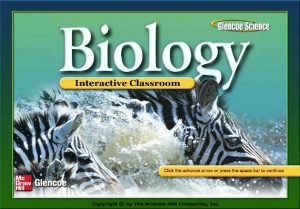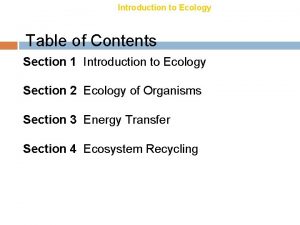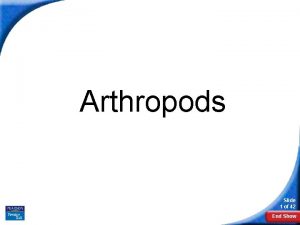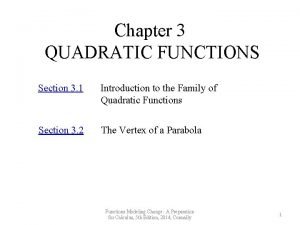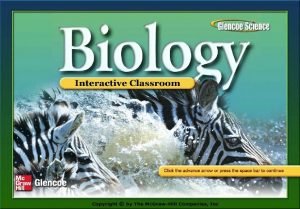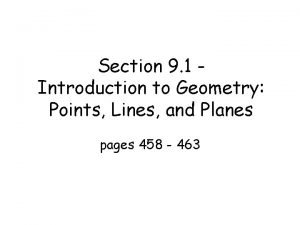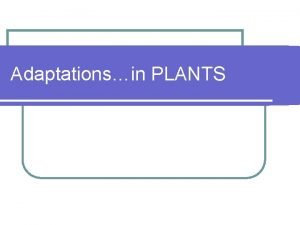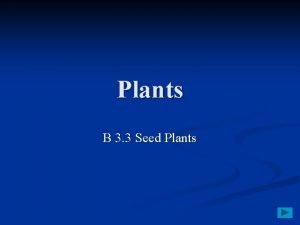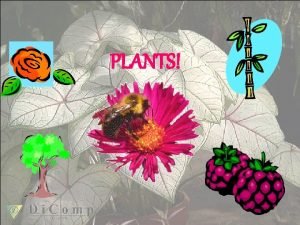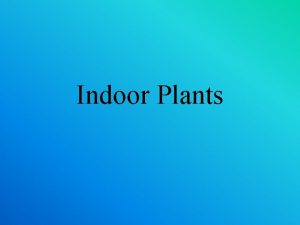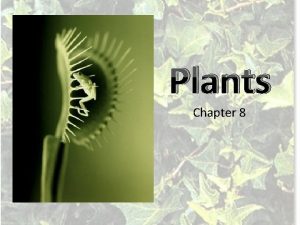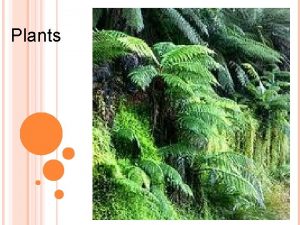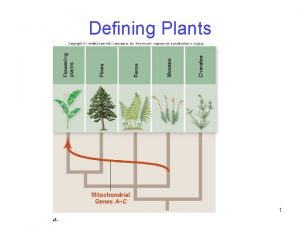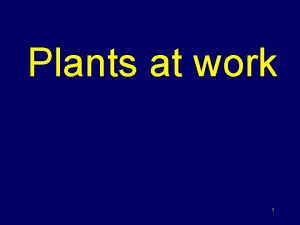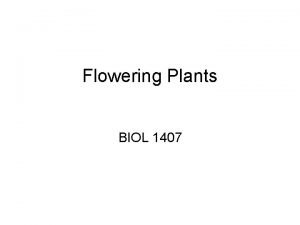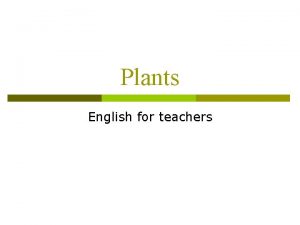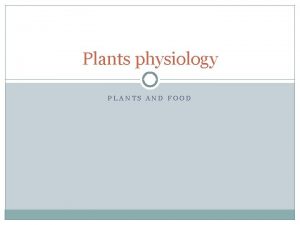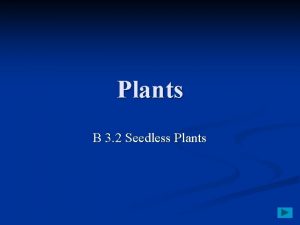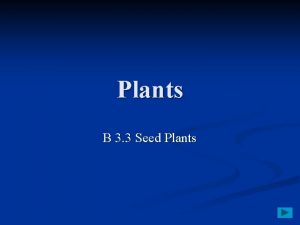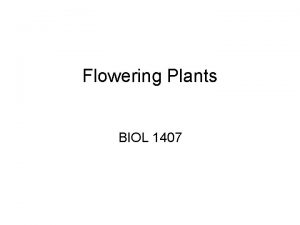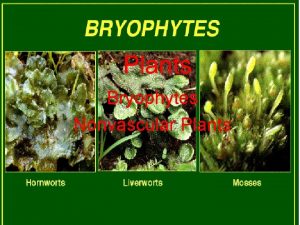Introduction to Plants Section 22 1 This section




















- Slides: 20

Introduction to Plants Section 22– 1 This section explains what a plant is and describes what plants need to survive. It also explains how the first plants evolved.

What Is a Plant? n Circle the letter of each sentence that is true about plants. 1. Plants carry out photosynthesis. 2. Plants have cell walls made of cellulose. 3. Plants develop from multicellular embryos.

1. What Is a Plant? What pigments do plants use to carry out photosynthesis? They use the green pigments chlorophyll a and b.

1. What Is a Plant? Is the following sentence true or false? All plants are autotrophs. n False

The Plant Life Cycle All plants have a life cycle that is characterized by alternation of.

1. Complete the table about plant generations.

1. The Plant Life Cycle

1. The Plant Life Cycle Seed plants have evolved reproductive cycles that can be carried out without. n water

1. What Plants Need to Survive n n n What are the four basic needs of plants? a. sunlight b. water and minerals c. gas exchange d. transport of water and nutrients throughout plant body

Why are plant leaves typically broad and flat? n Their shape maximizes light absorption.

Circle the letter of each sentence that is true about the basic needs of plants. n n n a. Plants require oxygen to support respiration. c. Water is one of the raw materials of photosynthesis. d. Plants have specialized tissues to carry nutrients upward.

Early Plants n The history of plants can be understood in terms of the evolution of what kind of structures?

n It can be understood in terms of the evolution of structures that acquire, transport, and conserve water.

What did the first plants evolve from? n The first plants evolved from an organism much like the multicellular green algae living today.

Circle the letter of each sentence that is true about multicellular green algae. n n n a. They have the same photosynthetic pigments as plants. b. They have the size, color, and appearance of plants. d. They have reproductive cycles that are similar to early plants.

How were early plants similar to today’s mosses? n They were simple in structure and grew close to the damp ground.

n n From the first plants, at least two major groups of plants evolved. What did those groups develop into? One group developed into mosses and their relatives. The other group developed into all other plants, including ferns, cone-bearing plants, and flowering plants.

Overview of the Plant Kingdom n n Circle the letter of each of the important features that botanists use to divide the plant kingdom into four groups. seeds water-conducting tissue Flowers

Overview of the Plant Kingdom n n n What are the four main groups of living plants? Ferns and their relatives Flowering plants Mosses and their relatives Cone-bearing plants

Overview of the Plant Kingdom n n The great majority of plants alive today are flowering plants.
 Algae in a sentence
Algae in a sentence Nonvascular plants definition
Nonvascular plants definition Vascular vs nonvascular plants
Vascular vs nonvascular plants Classify the non flowering plants with examples
Classify the non flowering plants with examples Photosynthesis equation
Photosynthesis equation Chapter 22 introduction to plants worksheet answers
Chapter 22 introduction to plants worksheet answers Section 22-4 seed plants answer key
Section 22-4 seed plants answer key Section 22-4 seed plants
Section 22-4 seed plants Essay structure introduction
Essay structure introduction Section 9 topic 1 introduction to circles
Section 9 topic 1 introduction to circles Section 26-1 introduction to the animal kingdom
Section 26-1 introduction to the animal kingdom Section 32-2 diversity of mammals
Section 32-2 diversity of mammals Section 28-2 groups of arthropods answer key
Section 28-2 groups of arthropods answer key Section 39-3 review bony fishes
Section 39-3 review bony fishes Chapter 28: arthropods worksheet answers
Chapter 28: arthropods worksheet answers Section 1 introduction to protists answer key
Section 1 introduction to protists answer key Section 18-1 introduction to ecology worksheet answers
Section 18-1 introduction to ecology worksheet answers Section 28-1 introduction to the arthropods
Section 28-1 introduction to the arthropods Calculus 3
Calculus 3 Chapter 1 the study of life
Chapter 1 the study of life Section 1 introduction to geometry answers
Section 1 introduction to geometry answers
